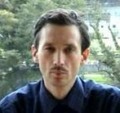The normal and healthy breathing rate in babies can be up to two to four times higher than in grown ups or adults. On the other hand, noisy breathing in babies is positively an indicator of hypocapnia (CO2 deficiency). This chemical is crucial for hundreds of body processes and reactions, including: relaxation of muscles, stability of the nerves, dilation of airways, normal immune function, control of respiration, repair of lungs, release of oxygen in tissues (Bohr effect), dilation of blood vessels (vasodilation) and many other vital effects. (Note that there are many silly or uninformed humans who assume that carbon dioxide is a "toxic gas" and deep automatic breathing (hyperventilation) enhances oxygenation of cells. Hundreds of research articles have shown that chronic hyperventilation DEPLETES oxygenation of the body cells. The less we breathe (but little and regular), the more oxygen our tissues receive. This is absolutely right for babies too.)
Tens of research papers have also demonstrated various destructive effects of CO2 deficiency on well-being and health of children. It is a shame of the contemporary medical community that this question is badly understood and explained in relation to significance of normal breathing rates and carbon dioxide norms.
Most frequent causes of noisy and loud breathing and poor health in infants and babies include: over-heating (too much clothing), over-feeding, absence of tight swaddling, mouth breathing .
Think about how to use these results in practice. How can parents change environment to fulfill needs of the developing baby?
Use of a pacifier or soother In any moment of time, mouth breathing in a baby should be speedily addressed with a dummy (or pacifier or soother).
Thermoregulation Any parent and caretaker should keep in mind that normal child’s metabolism is roughly 2-3 times higher than that of adults. Hence, the infants are well adjusted to live in cooler conditions and require less clothing. This is possible due to significant amount of brown fat cells that generate energy. Infants can give off up to approximately eighty per cent of their heat through their head, only when it is not covered. Thus, in warm conditions, it is necessary to keep the head of a child uncovered. (Keep the infant cool!)
How to test that heat exchange of a child is acceptable (no over-cooling)Hold both arms and feet of the child for a few seconds. They should be warm. If not, the child is facing a risk of being over-cooled. This scenario is very unlikely since overwhelming majority of adults overheat their infants.
Swaddling After prolonged criticism (1980-1990s), this millennial cultural custom is again endorsed by medical officials worldwide. This was possible due to numerous positive reviews appeared in the medical literature during the last decade. Swaddling, in order to be helpful, must be very tight, but without excessive heating of the infant. (The purpose of swaddling is to increase their CO2 and slow down their breathing.)
In many hot countries, they use sticks and ropes to ensure proper heat exchange and swaddling at the same time. In Russia, it was normal to cover the cradle of an infant, in addition to swaddling, with a blanket leaving a hole (only 2-3 cm in size) for breathing. That provided swaddled infants with even higher carbon dioxide content for the body. There were practices of keeping swaddled infants in drawers since they nap or sleep there longer and better, with less crying and awakening. Such babies never develop rashes and diathesis.
Additional method Russian Dr. Igor Charkovsky developed a method that includes numerous repetitive diving of a baby in a bathtub or swimming pool, showering and teaching babies and infants to swim. It is essential to gradually increase the number of dives and total time spent by a child under water so that to lower their automatic or basal breathing rates.
Finally, all parents ought to understand that toddlers, children, infants, newborn, all pick up bad habits of adults, including rapid breathing or hyperventilation, mouth breathing, negative emotions, anxiety states and many other risk factors.
Additional details, and supplementary techniques and suggestions are here: Effects and Treatment of Mouth breathing in Children and Infants .
Artour Rakhimov, PhD created Breathing Problems Solved - NormalBreathing.com that has hundreds of medical studies quoted, graphs, charts, tables, free manuals, techniques and breathing exercises to learn.


